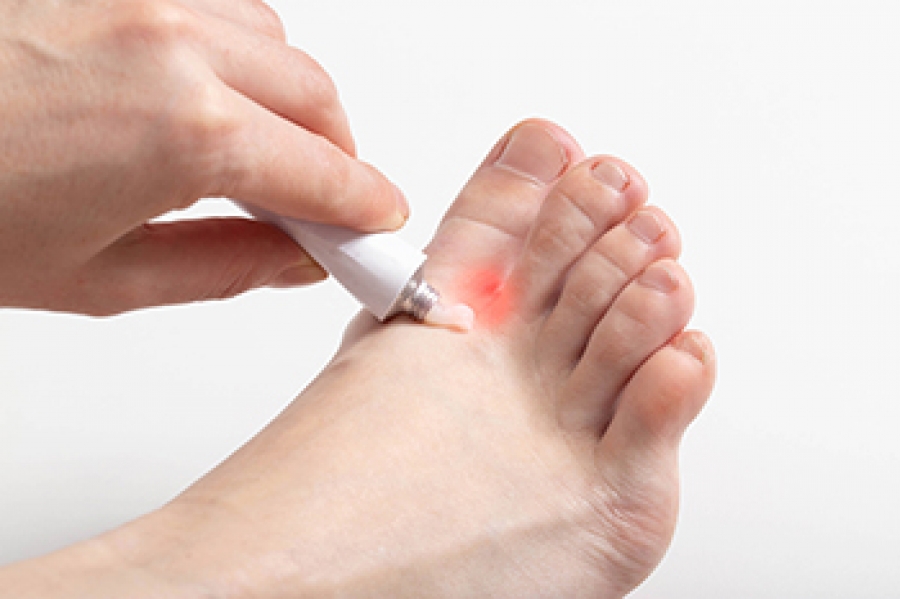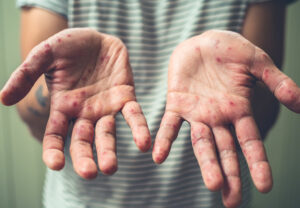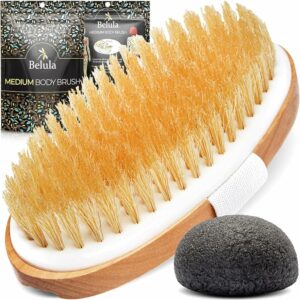Dry feet and Athlete’s Foot are two different conditions, with the former referring to lack of moisture in the skin and the latter being a fungal infection.
Table of Contents
Understanding The Difference
Dry Feet Vs Athlete’s Foot: Understanding the Difference
When we talk about foot health, it is important to distinguish between dry feet and athlete’s foot. While both conditions can affect the feet, they have distinct characteristics and require different approaches to treatment.
Exploring the characteristics of dry feet and athlete’s foot:
| Dry Feet | Athlete’s Foot |
|---|---|
| Dry, rough, and flaky skin | Itchy, red, and peeling skin |
| Cracked heels | Blisters and ulcers |
| No foul odor | Unpleasant smell |
Identifying the causes and symptoms of each condition:
Dry feet are often caused by factors like harsh weather conditions, excessive sweating, or using harsh soaps. On the other hand, athlete’s foot is a fungal infection caused by a specific type of fungus called dermatophytes.
Symptoms of dry feet include itching, tightness, and visible dryness, while athlete’s foot can cause intense itching, burning, and stinging sensations.
Proper foot care is crucial for both preventing and managing these conditions. Regularly moisturizing the feet, avoiding excessive moisture, wearing breathable shoes, and practicing good hygiene are essential for maintaining healthy feet.
In conclusion, understanding the characteristics, causes, and symptoms of dry feet and athlete’s foot is vital in order to provide appropriate care and treatment for these foot conditions. By following a proper foot care routine, you can keep your feet healthy and free from discomfort.
Dry Feet: Causes, Symptoms, And Remedies
Dry feet and athlete’s foot share similar symptoms, but have different causes. Dry feet often occur due to lack of moisture, while athlete’s foot is caused by a fungal infection. Remedies for dry feet include moisturization and exfoliation, while athlete’s foot requires antifungal treatment.
Common Causes Of Dry Feet
Dry feet can be caused by several factors, including:
- Excessive washing and scrubbing, which can strip away natural oils
- Hot showers or baths, as hot water can further dry out the skin
- Harsh soaps and detergents that remove moisture
- Changes in weather, particularly during winter when the air is dry
- Prolonged use of open-back shoes or sandals
Recognizing The Symptoms Of Dry Feet
- Tight, itchy skin
- Cracked or peeling skin
- Redness and inflammation
- Flaky or scaly patches
- Pain or discomfort
Effective Remedies For Treating And Preventing Dry Feet
To relieve and prevent dry feet, try the following:
- Moisturize daily with a rich, hydrating foot cream or lotion
- Use a gentle cleanser and avoid hot water
- Exfoliate gently to remove dead skin cells
- Wear comfortable shoes with adequate cushioning and support
- Avoid prolonged exposure to extreme temperatures
Athlete’s Foot: Causes, Symptoms, And Treatment
Athlete’s foot is a common fungal infection that affects the skin on the feet. Understanding the causes and risk factors of this condition is essential in its prevention and management. The primary cause of athlete’s foot is exposure to the fungus Tinea pedis, usually found in warm and moist environments such as public showers, locker rooms, and swimming pools. Individuals who frequently wear tight-fitting shoes or non-breathable socks may be at a higher risk of developing athlete’s foot.
Identifying the symptoms and potential complications of athlete’s foot is crucial for early detection and prompt treatment. Common signs include itching, burning, and redness between the toes and on the soles of the feet. Cracked or blistered skin and peeling may also occur. If left untreated, athlete’s foot can lead to bacterial infections and spread to other parts of the body.
Various treatment options are available for athlete’s foot. Over-the-counter antifungal creams or sprays containing active ingredients like terbinafine or clotrimazole are often effective in mild cases. For more severe infections, prescription antifungal medications or oral treatments may be necessary. Additionally, practicing good foot hygiene, such as keeping the feet clean and dry, wearing breathable shoes and socks, and avoiding shared footwear, can help prevent athlete’s foot from recurring.
Prevention Strategies For Dry Feet And Athlete’s Foot
Prevention strategies can play a crucial role in maintaining healthy feet and avoiding both dry feet and athlete’s foot. Lifestyle changes are essential for preventing these conditions. Proper hygiene practices are important to keep feet clean and dry. This includes daily washing of the feet with soap and water and thorough drying, especially between the toes. Using antifungal powders or sprays on the feet can also help prevent athlete’s foot.
It is crucial to pay attention to footwear and clothing choices. Opt for breathable footwear and socks made from natural materials to allow proper air circulation and prevent moisture build-up. Changing socks regularly, especially when the feet are sweaty, can also help. Avoid wearing damp or dirty shoes and ensure they are properly fitted to prevent friction and excessive pressure on the feet. Regularly airing out shoes and using antifungal sprays can help control fungal growth.
By implementing these prevention strategies, individuals can significantly reduce the likelihood of developing dry feet or athlete’s foot. Prioritizing foot health through proper hygiene practices, suitable footwear, and clothing choices is key to keeping feet comfortable and free from these conditions.
Natural Remedies For Dry Feet And Athlete’s Foot
One of the common foot problems that people face is dry feet, which can cause discomfort and even pain. There are several natural remedies that can help alleviate dry feet and restore moisture to the skin. One effective remedy is to soak the feet in warm water with Epsom salt, which helps to hydrate and soften the skin. Another option is to apply a moisturizing cream or lotion that contains ingredients such as shea butter or coconut oil. These ingredients have natural moisturizing properties that can help soothe dry and cracked skin. Additionally, wearing breathable socks made from natural materials like cotton can help prevent further drying of the feet. When it comes to athlete’s foot, a common fungal infection, there are also natural remedies that can be effective in treating the condition. Some herbal and homeopathic remedies like tea tree oil, garlic, and oregano oil have antifungal properties that can help eliminate the infection. It is important to follow the instructions carefully when using these remedies. To use natural treatments effectively for both dry feet and athlete’s foot, it is essential to maintain good foot hygiene. This includes keeping the feet clean and dry, avoiding walking barefoot in public places, and regularly changing socks and shoes. By incorporating these natural remedies and practicing good foot care, one can achieve healthy and moisturized feet.

Credit: health.clevelandclinic.org
When To Seek Professional Help
- Continuous discomfort and pain despite using home remedies
- Intense itching, burning, or stinging sensation
- Appearance of blisters, sores, or open wounds
- Persistent redness, swelling, or inflammation
- Prolonged peeling, cracking, or scaling of the skin
- Recurrent or spreading infection
Recognizing the signs that indicate the need for medical assistance:
- If over-the-counter treatments fail to provide relief
- If symptoms worsen or persist for more than two weeks
- If you have a weakened immune system or diabetes
- If you suspect a fungal infection but are unsure
| Dry Feet Treatment | Athlete’s Foot Treatment |
|---|---|
| Moisturize regularly and use emollients | Antifungal creams or sprays |
| Wear breathable, moisture-wicking socks | Oral antifungal medication (if severe) |
| Avoid harsh soaps and hot water | Keep feet clean and dry |
Frequently Asked Questions Of Dry Feet Vs Athlete’s Foot
Can Dry Feet Cause Athlete’s Foot?
Dry feet can create an environment where athlete’s foot can thrive. When the skin becomes too dry and cracks, it allows the fungus to enter. Moisturizing your feet regularly can help prevent athlete’s foot and keep your skin healthy.
Is Athlete’s Foot Contagious?
Yes, athlete’s foot is highly contagious. It can spread through direct contact with infected skin or through contaminated surfaces like towels and floors. It is important to practice good hygiene and avoid sharing personal items to prevent the spread of athlete’s foot.
What Are The Symptoms Of Athlete’s Foot?
Common symptoms of athlete’s foot include itching, redness, and peeling of the skin between the toes. Blisters and a burning sensation may also occur. If left untreated, the infection can spread to other parts of the foot and cause further discomfort.
How Is Athlete’s Foot Treated?
Treatment for athlete’s foot usually involves over-the-counter antifungal creams or sprays. It is important to apply the medication as directed and continue treatment for the recommended duration to fully eliminate the infection. Keeping your feet clean and dry can also aid in the healing process.
Conclusion
Understanding the difference between dry feet and athlete’s foot is crucial for proper treatment and prevention. Dry feet can be managed with regular moisturization and proper foot hygiene, while athlete’s foot requires antifungal treatments. By keeping your feet well-moisturized and maintaining good foot care practices, you can avoid the discomfort and infection associated with athlete’s foot.
Remember, taking care of your feet is essential for overall foot health and wellbeing.






